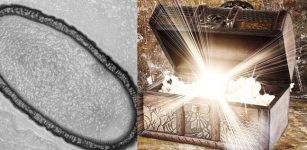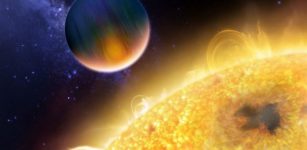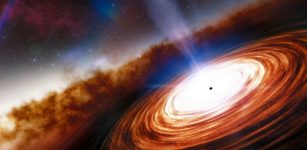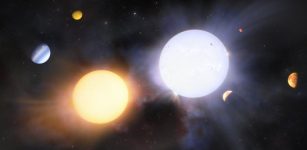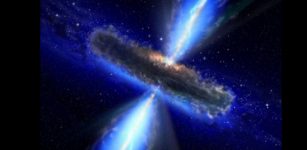Elusive Giant Planets And Meteor Magnets In Outer Space – New Study
Eddie Gonzales Jr. – MessageToEagle.com – A UCR-led international team of astronomers discovered two Jupiter-sized planets about 150 light years away from Earth that could reveal whether life is likely on the smaller planets in other solar systems.
“We believe planets like Jupiter have profoundly impacted the progression of life on Earth. Without them, humans might not be here to have this conversation,” Stephen Kane, lead study author and UCR associate professor of planetary astrophysics, said in a press release.
“Understanding how many other stars have planets like Jupiter could be very important for learning about the habitability of planets in those systems.”
Many larger planets have been found close to their stars. Big planets far from their stars have, until now, been harder to find.
One popular method of searching for exoplanets — planets in other solar systems — involves monitoring stars for “wobble,” in which a star moves toward and away from Earth. The wobble is likely caused by the gravitational pull a nearby planet is exerting on it. When a star wobbles, it’s a clue there may be an exoplanet nearby.
The larger exoplanets also take many years to circle their stars, which mean observing a complete orbit could engulf an astronomer’s entire career. To accelerate the process, Kane and his team combined the wobble method with direct imaging. This way, if the team thought a planet might be causing wobble, they could confirm it by sight.
 The “wobble” technique: blue wave shows movement toward Earth and the red occurs as the star heads away. (NASA/JPL-Caltech)
The “wobble” technique: blue wave shows movement toward Earth and the red occurs as the star heads away. (NASA/JPL-Caltech)
Obtaining a direct image of a planet quadrillions of miles away is no simple task. It requires the largest possible telescope, one that is at least 32 feet long and highly sensitive. Even from this distance, the light of the stars can overexpose the image, obscuring the target planets.
The team applied the combination of wobble and imaging method to 20 stars. In addition to the two being orbited by giant Jupiter-like planets that had not been previously discovered, the team also detected a third, previously observed star with a giant planet in its system.
“This discovery is an important piece of the puzzle because it helps us understand the factors that make a planet habitable and whether that’s common or not,” said Kane.
“We are converging rapidly on answers to this question that the past 3,000 recorded years of history could only wish they had available to them.”
Written by Eddie Gonzales Jr. – MessageToEagle.com Staff Writer




